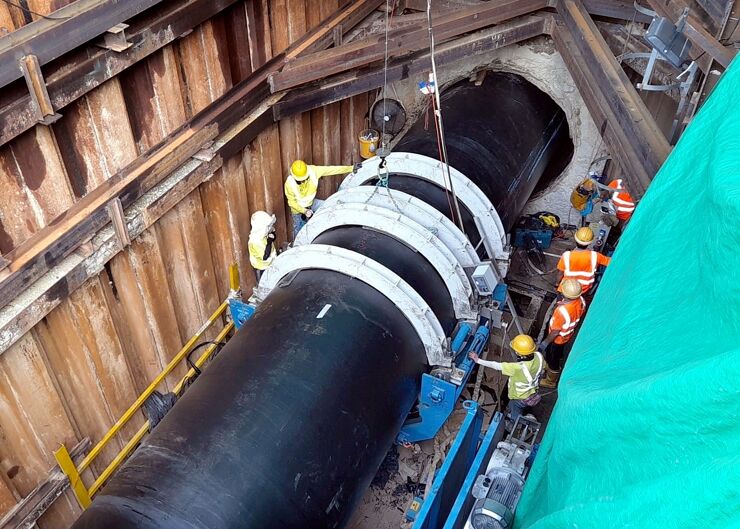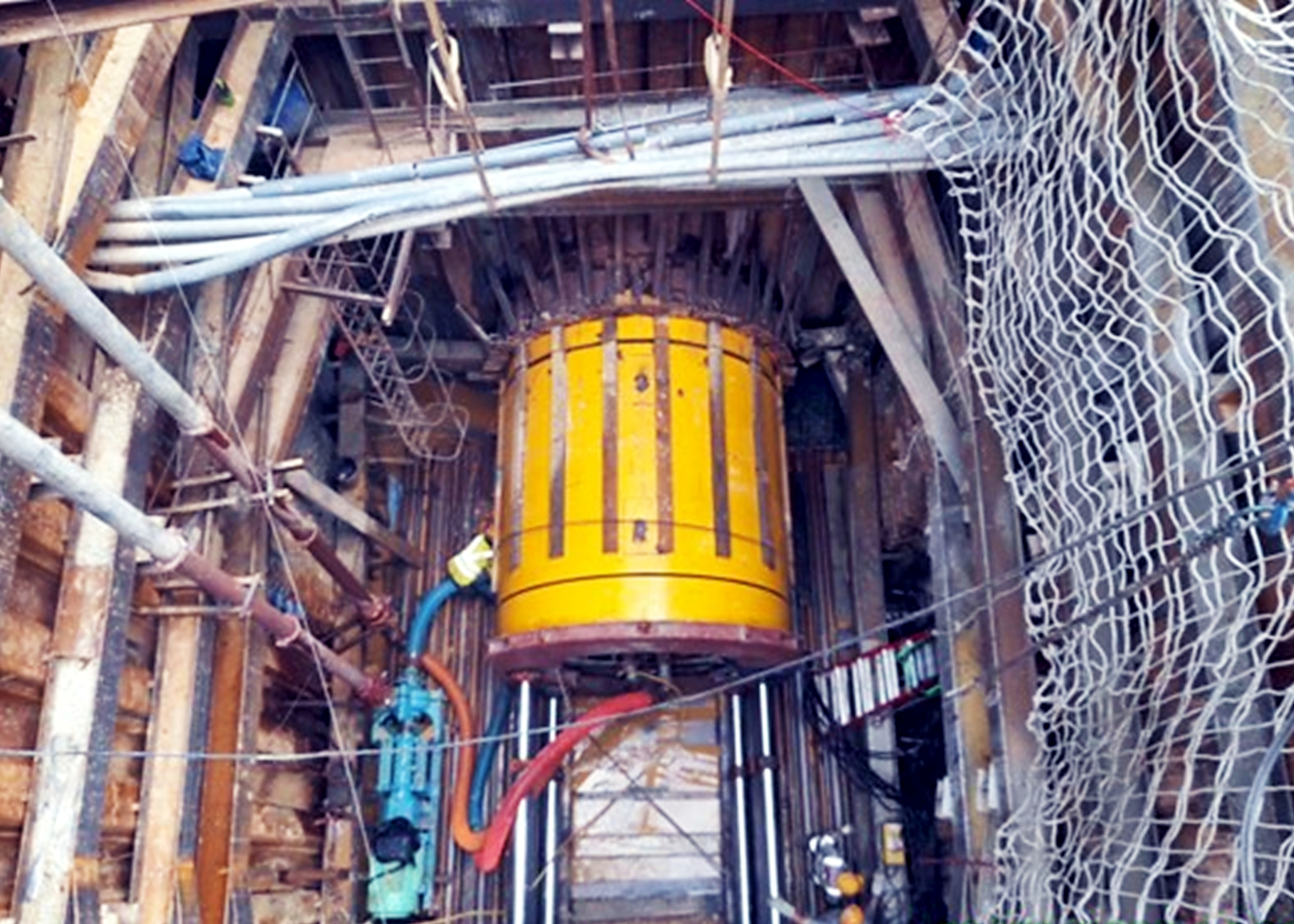
The Water Supplies Department (WSD) of the Government of the Hong Kong Special Administrative Region has adopted NEC to procure a HK$808 million (£81 million) water main replacement project in the New Territories. The improvement to Dongjiang P4 water main at Sheung Shui and Fanling was let to Ming Hing Vasteam Joint Venture in September 2020 under an NEC4 Engineering and Construction Contract (ECC) Option C (target contract with activity schedule). WSD was NEC project manager and supervisor.
The main transfers raw water from Dongjiang in mainland China received at Muk Wu pumping station to water treatment works or to impounding reservoirs for temporary storage. The project involved the replacement of about 5 km glass-reinforced-plastic pipes of 2.1−2.3 m diameter as these were laid almost 40 years ago and had deteriorated. The main’s function was temporarily taken up by other mains during the replacement works at the expense of overall system flexibility and capacity. Despite numerous challenges, the works were completed in accordance with the agreed revised programme and budget in January 2023.
During the main replacement works, the project team had to exercise extreme care to ensure the safe operation of the adjacent East Rail line and Fanling Highway. In parallel, the team had to deal with high pedestrian flows, unexpectedly heavy road traffic, numerous underground structures and congested utilities, resulting in a mix of open-cut and trenchless techniques being adopted for the construction works. Other challenges included the impact of the Covid-19 pandemic and associated logistics delays, all of which were overcome through a highly collaborative relationship between the client and contractor. The contract won the 2023 NEC Water Contract of the Year award.
Partnering and collaboration
WSD chief engineer/construction Andy Lok says the project team members shared a joint site office to foster the NEC-inspired partnering culture and to facilitate effective communication. ‘Weekly meetings were held to explore optimal solutions for any site problems at an early stage, and regular partnering workshops enhanced collaboration and mutual trust among team members.’
He says team members promptly resolved problems via joint efforts. ‘For example, the project manager took the initiative to issue an early warning immediately on learning of a potential risk of working next to Fanling Highway due to unexpectedly high traffic flows. These resulted from the opening of new cargo-clearance facilities at Liantang Port and the Heung Yuen Wai Boundary Control Point.’
Lok says that to achieve the common goal of timely completion, the project manager collaborated with the contractor to develop viable alternative alignments and construction methods via an early warning meeting. ‘With an innovative mindset, the contractor proposed slip-lining with 1.8 m diameter polyethylene pipes, the largest ever used in Hong Kong, as an alternative to laying new 2.2 m diameter steel pipes. The project manager and the contractor worked closely together to overcome technical problems, such as compiling new specifications for the works and sourcing the pipes and welding machines.’
He says that slip-lining successfully avoided traffic disruption and was completed in a timely fashion. ‘This example fully demonstrated the NEC’s required “spirit of mutual trust and co-operation” between the client and the contractor in resolving site problems.’
Lok says delivery of construction materials was significantly affected by the Covid-19 restrictions during the course of works. ‘Having collaboratively reviewed the programme and resource allocation, the project manager and the contractor jointly formulated measures to mitigate the delay. These included increasing resources, extending working hours and adopting airfreight for critical slip-lining components. These measures effectively ensured smooth and uninterrupted works even under the adverse impact of Covid-19.’
Innovation and engagement
 WSD senior engineer/construction Ruth Tso says that about 360 m length of the replacement mains was to be laid inside a 3.3 m diameter tunnel near Sheung Shui station on the East Rail line to avoid disrupting rail operation. ‘It was a big challenge to create such an underground space in a congested urban area. Working collaboratively, the project team adopted ground penetrating radar to verify the locations of the underground structures and utilities and form a three-dimensional building information model. From this we successfully identified a feasible alignment for the pipe-jacked tunnel at an optimal depth.’
WSD senior engineer/construction Ruth Tso says that about 360 m length of the replacement mains was to be laid inside a 3.3 m diameter tunnel near Sheung Shui station on the East Rail line to avoid disrupting rail operation. ‘It was a big challenge to create such an underground space in a congested urban area. Working collaboratively, the project team adopted ground penetrating radar to verify the locations of the underground structures and utilities and form a three-dimensional building information model. From this we successfully identified a feasible alignment for the pipe-jacked tunnel at an optimal depth.’
She says that the project team also extended NEC-inspired collaboration to external stakeholders through proactive engagement. ‘For instance, we organised visits and workshops to the Y-Park green waste recycling centre in Tuen Mun for adjacent schools. We also visited nearby villages to promote the message of greening and enhance the image of WSD. The stakeholders appreciated our efforts by granting full support to our proposals, such as for temporary traffic schemes.’
Project highlight video (Chinese)
English transcript of the project highlight video
Benefits of using NEC
- NEC requirement to act in a ‘spirit of mutual trust and co-operation’ ensured full collaboration between the client and contractor to overcome many project challenges.
- NEC early warning process helped to identify and mitigate risks to completion at the earliest stage, such as unexpectedly high traffic volumes.
- NEC-inspired collaboration led to several innovative solutions, such as the largest slip-lining works in Hong Kong and the use of ground penetrating radar to create an underground building information model.




